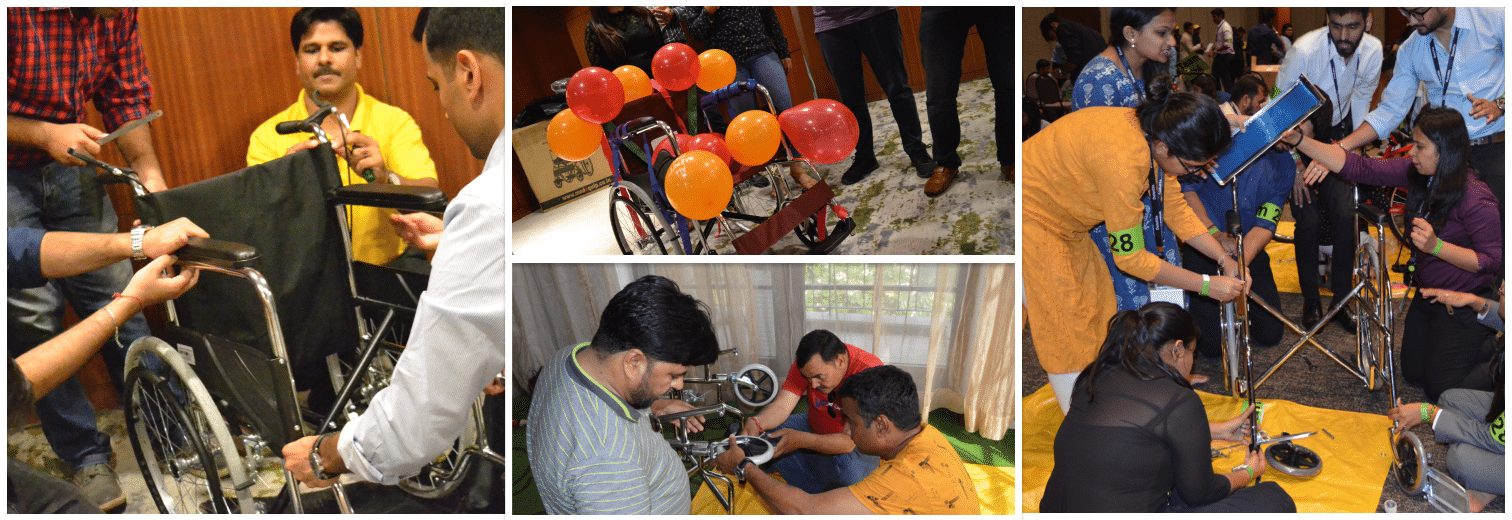They say a team is as good as it’s weakest link. When I got into the details to understand this more, it made me realize that there is an I in team. It has been two fantastic years for me working as a facilitator at FocusU. This has enabled me to interact with teams that represent different demographics and has taught me that recognizing individual efforts is very critical to success.
In any in-sync team, it is important that each individual understands his or her expectations. Mostly people are clear about their team goal, but the significance to understand the individual roles is often missed out. It is the organization’s responsibility to funnel roles and responsibilities down for each team member. Individual roles should be defined as clearly as possible so that a smoothly functioning team can be built.
Below are a few of the individual behaviors that are commonly found in many good team players; these have personally helped me contribute more for my team over the past few years.
Play to your strengths:
Table of Contents
 To start with, every individual should be clear of why he or she is part of a team. Once this is clearly understood, it helps improve productivity. Let’s talk about India’s most loved game, cricket, to better understand this concept. When Virendar Shewag or Akash Chopra used to open for the Indian cricket team, Shewag would always thrash the bowlers all around the park while Akash Chopra silently keep on rotating strikes and would not even try and compete with Shewag. That made them one of the most successful opening batsmen of all time. They both were aware of each other’s strengths and weakness and played accordingly. Similarly we must share our strengths and weakness with the team we work with and ask them how they want us to participate for the overall success of the team. After that, we just do our part and have fun!
To start with, every individual should be clear of why he or she is part of a team. Once this is clearly understood, it helps improve productivity. Let’s talk about India’s most loved game, cricket, to better understand this concept. When Virendar Shewag or Akash Chopra used to open for the Indian cricket team, Shewag would always thrash the bowlers all around the park while Akash Chopra silently keep on rotating strikes and would not even try and compete with Shewag. That made them one of the most successful opening batsmen of all time. They both were aware of each other’s strengths and weakness and played accordingly. Similarly we must share our strengths and weakness with the team we work with and ask them how they want us to participate for the overall success of the team. After that, we just do our part and have fun!
D.W.Y.S.Y.W.D (Do What You Say You Will Do):
 Once you are aware of your role in a team, the next step is to live up to your commitments. They say a leader is watched 24 hours. Hence, he or she must be very conscious of every action. The same rule applies to everyone in a team. Every action aids to building some perception about you. So if you ever promise anything to the team, you must do that. Once you start living up to your promises that also helps you hold others accountable. One must also learn the art of saying no. It is better to say no upfront than to say sorry later. Having said that, remember it is not your biggest actions that affects your credibility – it is the smallest actions that make the largest difference. An action as small as arriving on time for a meeting sends a very strong message about you.
Once you are aware of your role in a team, the next step is to live up to your commitments. They say a leader is watched 24 hours. Hence, he or she must be very conscious of every action. The same rule applies to everyone in a team. Every action aids to building some perception about you. So if you ever promise anything to the team, you must do that. Once you start living up to your promises that also helps you hold others accountable. One must also learn the art of saying no. It is better to say no upfront than to say sorry later. Having said that, remember it is not your biggest actions that affects your credibility – it is the smallest actions that make the largest difference. An action as small as arriving on time for a meeting sends a very strong message about you.
Create a culture of feedback/feed forward:
 Some say giving feedback is an art. Others say it is not about the giver, but rather it is about the receiver. I have been very fortunate to work with a team where feedback is called “feed forward” and used as a process to help others. I believe giving feedback is one of the most constructive tools to build a team. Once you keep the personal aspects separate from the problem the whole process becomes joyful. The constructive feedback is shared to improve someone’s specific behaviors or habits. Hence you must create a culture of sharing very open feedback with one another. However, to do this you first have to be very open in accepting feedback. Doubting others’ intentions will not work. Initially it is going to be difficult to create a culture like this, but ultimately this culture guarantees a positive difference in the team.
Some say giving feedback is an art. Others say it is not about the giver, but rather it is about the receiver. I have been very fortunate to work with a team where feedback is called “feed forward” and used as a process to help others. I believe giving feedback is one of the most constructive tools to build a team. Once you keep the personal aspects separate from the problem the whole process becomes joyful. The constructive feedback is shared to improve someone’s specific behaviors or habits. Hence you must create a culture of sharing very open feedback with one another. However, to do this you first have to be very open in accepting feedback. Doubting others’ intentions will not work. Initially it is going to be difficult to create a culture like this, but ultimately this culture guarantees a positive difference in the team.
There is an I in team. Now it is up to us to grow into our full potential as the we in team, and the I in team.





